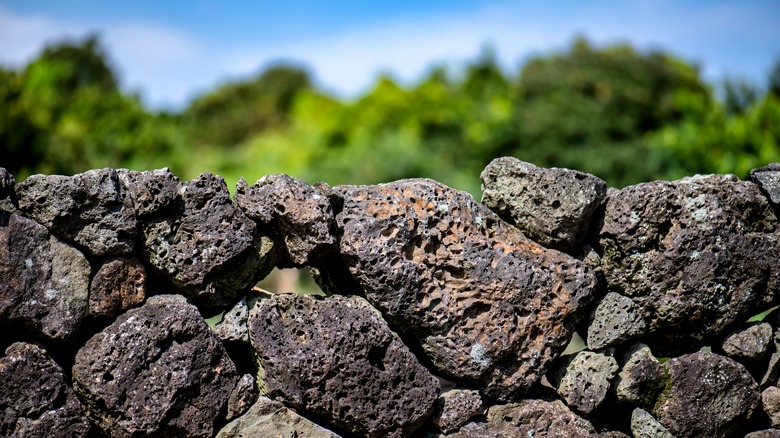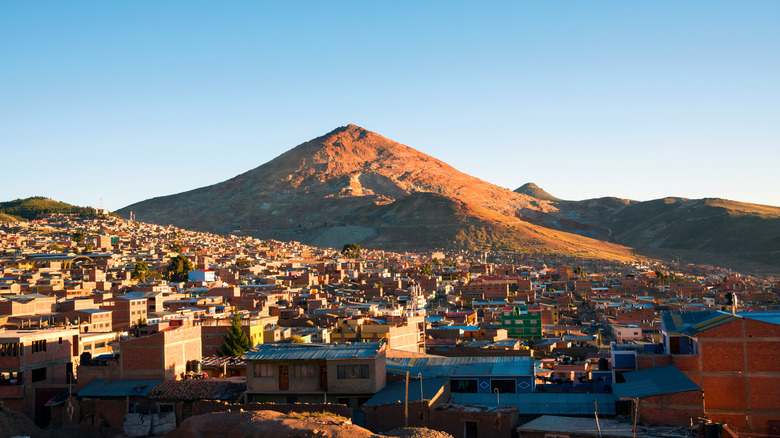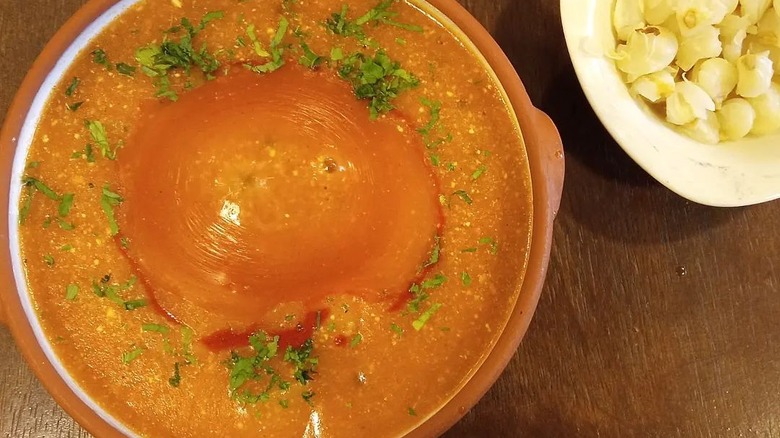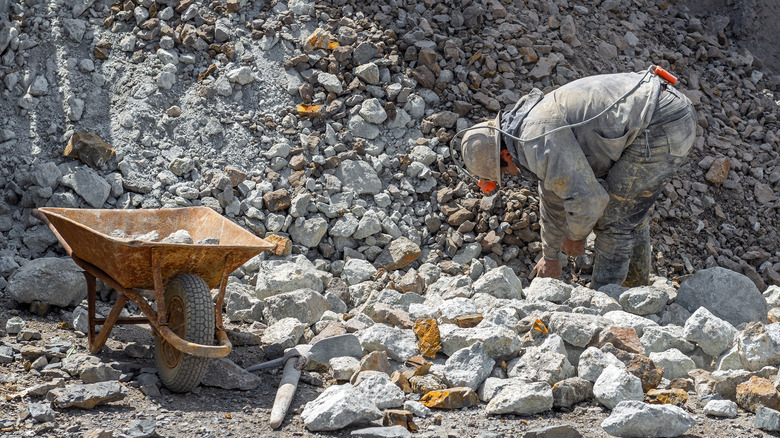Volcanic Rocks Are The Key To This Traditional Bolivian Soup
Many of us may be familiar with the European folktale of "Stone Soup." According to William Rubel, in an essay written for Stone Soup Magazine, the origins of this folktale — in which a clever man outwits those around him who are reluctant to help — are hazy at best. The story wasn't written down until 1720, and very little is known about how or where the author heard the yarn. Such is the nature of the oral tradition.
While the myth of "Stone Soup" remains a purely European tradition, stone soup is a reality in the mountainous South American country of Bolivia. Per Atlas Obscura, the soup is called k'alapurka. It is an ancient stew of the Andes, made of yellow corn flour and chilis and heated with a hot, volcanic rock. Despite the landscape that birthed it, the true story of Bolivia's own stone soup is as fascinating as any piece of lore. We'll look at the history and environment of Potosí, the native home of k'alapurka, and the mountain that provided the all-important stones: Cerro Rico.
Cerro Rico is a mountain of history
You would never know from viewing an exposé on the horrors of silver mining Cerro Rico — "Rich Mountain" — of Potosí that this southern Bolivian city once rivaled the likes of London and Paris in terms of wealth and culture (via BBC News). The silver mined from the depths of this great mountain helped bankroll the Spanish Empire at its peak during the 16th to 18th centuries. However, Potosí has become a haven of poverty, with teenagers as young as 14 going to work the mines in order to make money.
Cerro Rico and the cuisine of Potosí are intrinsically linked. According to Bolivian Express, k'alapurka is a dish of the indigenous Quechua people who first settled in the barren landscape around Cerro Rico. At that time, the mountain was an active volcano. Since cooking with fire was difficult owing to the nature of the terrain, the Quechua utilized the hot, volcanic stones as a means of boiling the broth for the k'alapurka. The dish became popularized in the 17th century once it was discovered by the colonial Spanish.
A unique soup created for warmth
K'alapurka is not something that can be easily replicated outside of Potosí, owing chiefly to its central ingredient: volcanic rock. Outside of its heat source, the soup itself is hearty and simple. As both Bolivian Express and Atlas Obscura make clear, understanding the environment of Potosí is key to understanding the nature of k'alapurka. The combination of the yellow corn flour broth, potatoes, added spices and herbs such as oregano, green chilis, garlic (courtesy of the Spanish), chachacoma leaves, and hearty meats like fried pork or beef jerky, all serve toward warming and fueling the body.
Britannica tells us that Potosí stands at an elevation of 13,290 feet, making it one of the highest elevated cities in the world. As a result, the environment of this city in the Andes Mountains is characterized by high winds and freezing temperatures. Very little grows there, and cultivating the land for any type of agriculture is grueling work. This combination of environmental factors made Potosí the inevitable birthplace of a dish like k'alapurka. The stew exists purely because of the frigid temperatures, the winds, and the hot rocks of the volcano. It stands out amongst other types of soup, with hardly any other in Bolivia being able to replicate k'alapurka's distinct qualities.
The volcanic rocks of Potosí transform k'alapurka
This brings us to the volcanic rocks themselves. With Cerro Rico no longer an active volcano, the rocks collected for cooking the stew must be reheated over a flame. Once heated, the rocks are placed in the thick, hearty stew carefully with tongs. From this point on, the soup goes through a transformation — what was a simple stew served in an earthenware bowl is now a bubbling cauldron of warmth and spice. The finishing result when k'alapurka is served is rather spectacular and quite easy on the eyes and stomach (via YouTube).
The hard-working miners of Potosí, like their agrarian ancestors before them, continue to eat k'alapurka with regularity and enthusiasm. Bolivian Express explains that it is as popular amongst modern potosinos as it has been for generations. And for a city as down on its luck as Potosí, sharing pride in a tradition is more important than ever.



